The Impact of Data Reuse
Citations of DesignSafe (updated on January 1st 2025)
Another way of measuring the impact of DesignSafe is by identifying research papers that cite the use of DesignSafe or the data available at DesignSafe. Table 1 lists DesignSafe citations since 2018 as determined from papers identified via Google Alerts. The first column represents papers that make any reference to DesignSafe through citation of the DesignSafe marker paper (Rathje et al. 2017) or through the acknowledgements. The next column represents papers in which a researcher cites their own data in DesignSafe as a part of the original research project, and the third column represents papers that re-use data available in DesignSafe after the original project is over. Note that a paper may contribute to multiple columns in Table 1. For instance, a data re-use paper may also reference the marker paper, or a paper may cite more than one dataset. There is a meaningful number of total citations that reference the use of DesignSafe and the data published in DesignSafe. While Google Alerts may not capture all of the citations and mentions of DesignSafe datasets that are available in the literature, the positive trend highlights the value of publishing data, the importance of citing data in the references using DOIs, and the types of research being conducted using data published in DesignSafe.
|
Year |
DesignSafe |
Primary |
Subsequent |
Totals |
|
2024 |
40 |
133 |
171 |
344 |
|
2023 |
64 |
142 |
140 |
346 |
|
2022 |
65 |
107 |
105 |
277 |
|
2021 |
42 |
89 |
60 |
191 |
|
2020 |
52 |
74 |
61 |
187 |
|
2019 |
21 |
25 |
30 |
76 |
|
2018 |
26 |
31 |
13 |
70 |
Data Reuse Case Studies
Data reuse can take many forms: expanding work on established lines of research, validating numerical models, testing new hypotheses, and more. To learn more about the motivations for data reuse we interview DesignSafe data consumers and develop Data Reuse Stories. The researchers interviewed give us insight into not only the variety of data available from DesignSafe that has been reused, but also the distinct ways those data can be reused across different fields within the NHERI community. Furthermore, these researchers demonstrate that DesignSafe can act as an invaluable platform for collaboration across institutions and fields of interests within natural hazards research, facilitated by the easy access to published datasets and works-in-progress in the Data Depot. These research groups valued the overall completeness of the datasets and the metadata offered within the Data Depot platform.
AI AND MACHINE LEARNING
Structural Health Monitoring Framework (Sajedi and Liang 2019)
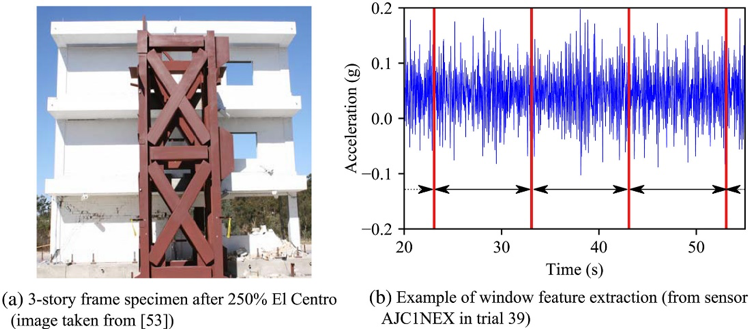
Recent work by researchers from the University of Buffalo has shown the value of continuing to preserve and provide access to legacy data from NEES through the DesignSafe Data Depot. Seyed Omid Sajedi and Xiao Liang (2019) repurposed shake table experimental data from Seismic Performance Assessment and Retrofit of Non-Ductile RC Frames with Infill Walls (Shing et. al. 2007) to evaluate the effectiveness of a structural health monitoring framework they developed. This framework identifies the existence, probable location, and severity of damage in a structure following an earthquake, and has the potential to provide information about building damage accurately, dependably, and quickly for the affected communities. Read more >>
Predicting Wind Pressure Coefficients (Tian et al. 2020)
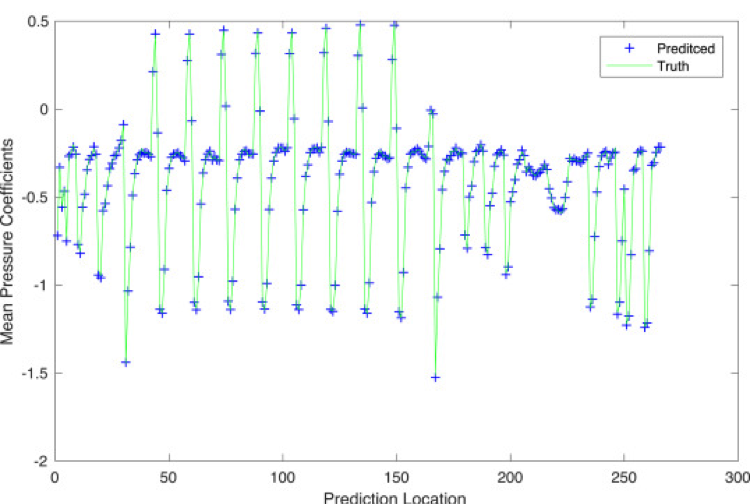
DesignSafe resources, especially the Data Depot publication pipeline, have proven invaluable to wind researchers. Scholars out of the University of Florida and Clarkson University (Tian et al. 2020) were able to reuse experimental data from Upwind Terrain Effects on Low-Rise Building Pressure Loading Observed in the Boundary Layer Wind Tunnel'' (Fernández-Cabán and Masters 2018) that was published in the Data Depot. Read more >>
Estimating Cascading Hazards Chain (Xu el al. 2022)
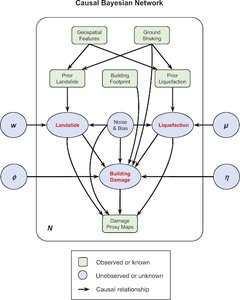
To Susu Xu and her team, the key to developing a ML algorithm to estimate earthquake induced cascading hazards chain is reproducibility. Their research uses satellite data to identify surface ground changes after different earthquakes worldwide. Their challenge was distinguishing the causes of these ground changes: building damage, liquefaction, landslides, or other secondary events that happen during earthquakes. Read more >>
NUMERICAL AND EXPERIMENTAL VALIDATION
Integrated seismic response predictions (Erazo and Nagarajaiah 2019)
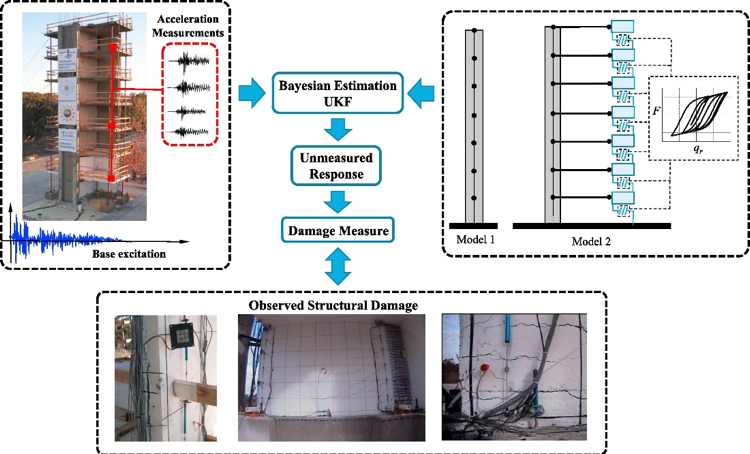
Dr. Kalil Erazo and his colleagues from Rice University and Tufts University have repeatedly used data from the experimental project Shake Table Response of Full Scale Reinforced Concrete Building Slice (Panagiotou et al. 2013, https://doi.org/10.4231/D35T3G04T) to validate a Bayesian-modeling approach that couples experimental measurements with a numerical model of the system. Read more >>
Hysteretic finite element model of structural beams (Amir et al. 2020)
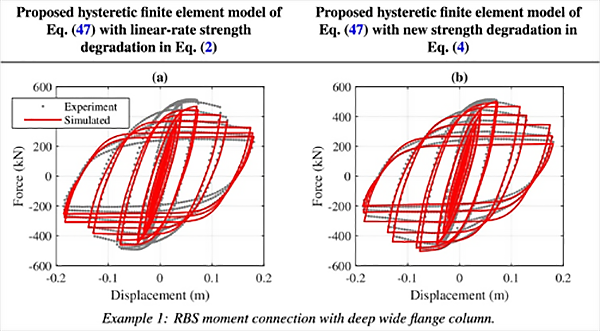
Legacy data from the NEES cyberinfrastructure available in DesignSafe continues to prove useful for current NHERI researchers, including those seeking to validate new computational modeling frameworks. Researchers out of Penn State's Institute for Computer and Data Sciences (Amir et al. 2020) reused experimental data on buckling at connections in steel structures from Ultra-Low Cycle Fatigue and Fracture in Steel Structures (Kanvinde et al. 2005) to validate one component of their hysteretic beam finite-element model. Read more >>
Synergic use of Sentinel-1 and Sentinel-2 data for automatic detection of earthquake-triggered landscape changes: A case study of the 2016 Kaikoura earthquake (Mw 7.8), New Zealand
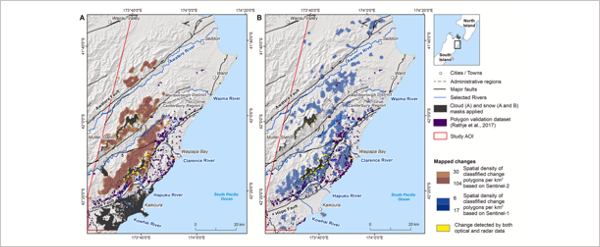
A Google Scholar search proved to be a gold mine to researchers from the Czech Geological Survey who recently published their findings (Jelének and Kopa?ková-Strnadová, 2021) on using Copernicus Sentinel-1 radar data with Copernicus Sentinel-2 optical data in a novel, cloud-based service to automatically identify post-earthquake landslides. The authors found and reused two datasets published on DesignSafe (Rathje et al., 2017 and Massey et al., 2021) that contain manually identified landslides following the 2016 Kaikura earthquake. These data were used to validate the landslides identified by their automated workflow. Read more >>
Seismic Response of Cut and Cover Tunnels (Sadiq et al. 2019)

Availability of open, curated datasets are fundamental to those researchers who do not have the resources to conduct large-scale experiments. Such is the case for Dr. Duhee Park and his students at Hanyang University in South Korea. Their research group studies various effects of earthquakes on tunnels, and they were looking for experimental data regarding the seismic response of a tunnel system. In their published research (Sadiq et al. 2019) they used published data from Gillis et al. (2014) from a geotechnical centrifuge test that investigated the seismic response of a shallow cut and cover tunnel in sand to validate a widely used Equivalent linear (EQL) analysis approach for seismic analysis of tunnels. Read more >>
Development and validation of a field wind engineering instrument to understand thunderstorm wind loading on structures
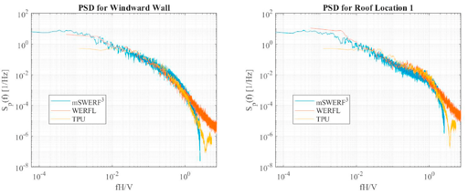
Antonio Zaldivar de Alba has the habit of regularly browsing the DesignSafe Data Depot to see what new datasets are publicly available. Zaldivar de Alba, with his colleagues from the University of Illinois Urbana-Champaign reused data published on DesignSafe to validate wind load measurements from the newly developed mSWERF3 mobile bluff-body (Zaldivar et al., 2021). They were able to easily download the full-scale wind tests published by Smith et al. (2018) and compare them to those measured using the mSWERF3. With the validation provided by the published dataset, the authors have since been able to confidently deploy the mSWERF3 in a number of settings to make measurements of wind loads, including those from tornado-like dust devils in the Chihuahuan desert. Read more >>
Understanding Tsunami-Debris-Structure Interactions via SPH-FEM
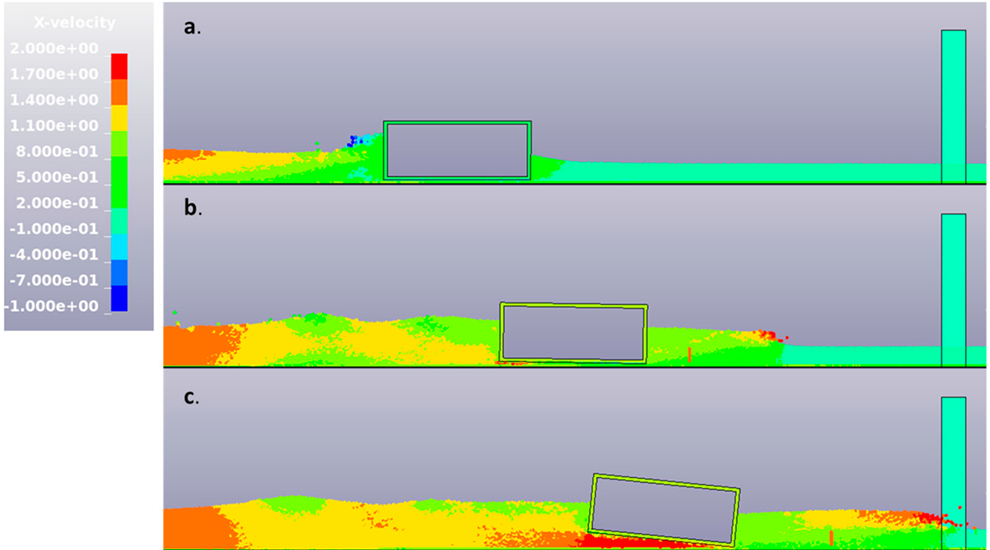
When the pandemic upended their plan to conduct experiments funded by the Pacific Earthquake Engineering Research Center (PEER) to understand bridge damage caused by tsunami debris, the team at the University of Nevada Reno (UNR) decided to use solely a numerical approach. Dr. Denis Istrati, the co-principal investigator of the project, explained that although reconnaissance surveys after major tsunamis like the 2011 Tohoku ?sunami in Japan revealed the catastrophic effects of water-borne debris on transportation infrastructure, this phenomenon had not been deciphered and quantified yet. This could be attributed to the complexity of the tsunami-debris-bridge interaction, such as, its multi-physics nature and the uncertainty in reproducing it numerically via traditional coastal engineering tools and computational fluid dynamics methods. Read more >>
Monitoring structural damage using CCTV data: a complete data lifecycle
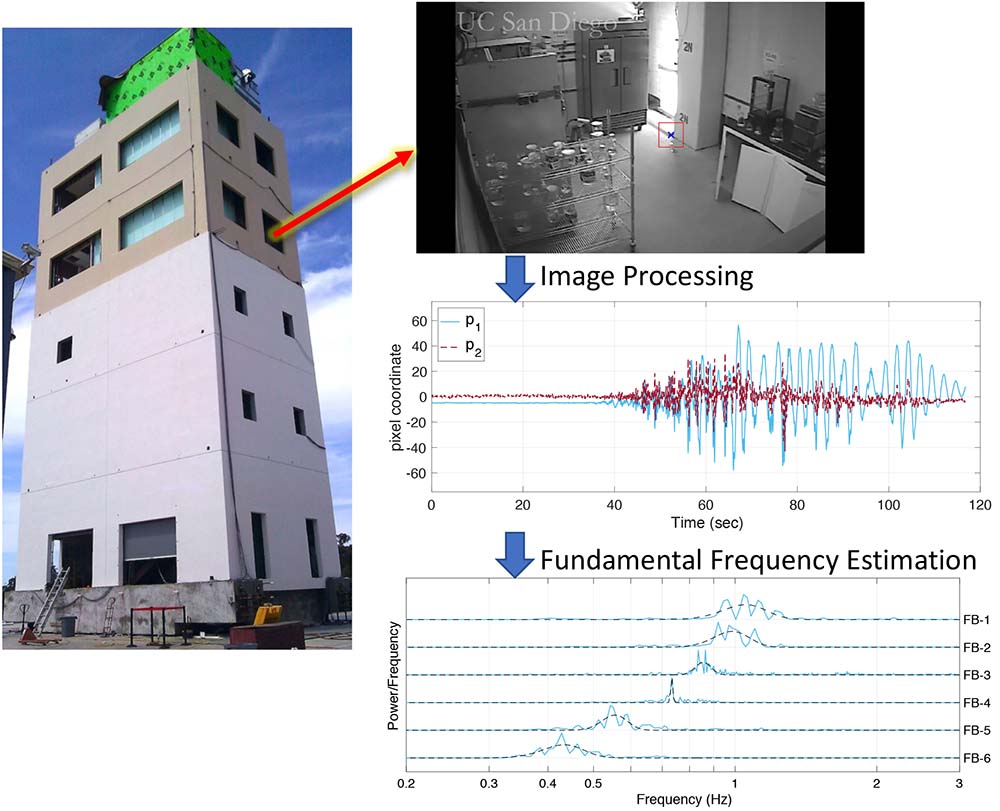
Based on experience using vision-based methods to take displacement measurements in the lab environment, Dr. Philip Harvey saw the potential of using the ubiquitous CCTV data inside buildings for dynamic health monitoring and damage estimation during and after earthquakes. He knew that large-scale experiments such as those conducted at the shake table at the University of California San Diego are heavily instrumented with cameras and decided to explore this idea with the camera data available from the Building Nonstructural Components and Systems (BNCS) project published on DesignSafe (Hutchinson et al. 2012). Read more >>
MODEL DEVELOPMENT
Wind Effects on Elevated Buildings (Kim et al. 2020)
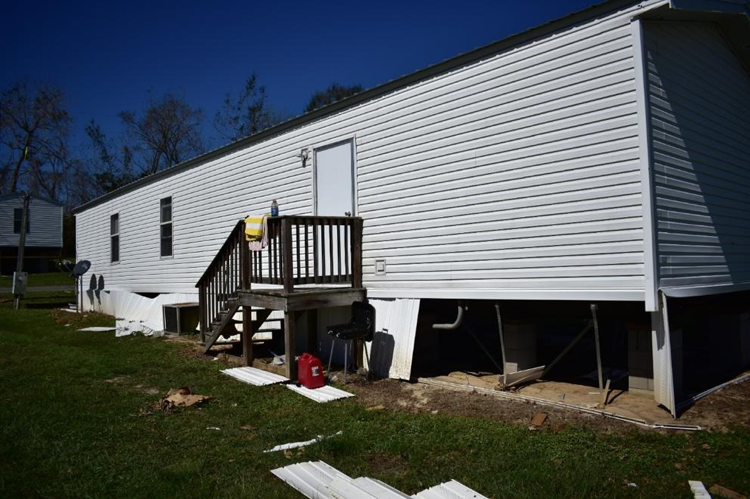
The DesignSafe Data Depot not only serves the NHERI community by providing access to scholarship and datasets, but also by acting as a means for researchers to collaborate through sharing and combining datasets. Elaina Sutley of the University of Kansas and Arindam Chowdhury of Florida International University, along with other colleagues (Kim et al. 2020), merged field damage survey data and experimental data collected separately to gain a better understanding of wind effects on coastal elevated buildings. Read more >>
Observed Hurricane Damage to Manufactured Homes (Sutley et al. 2020)
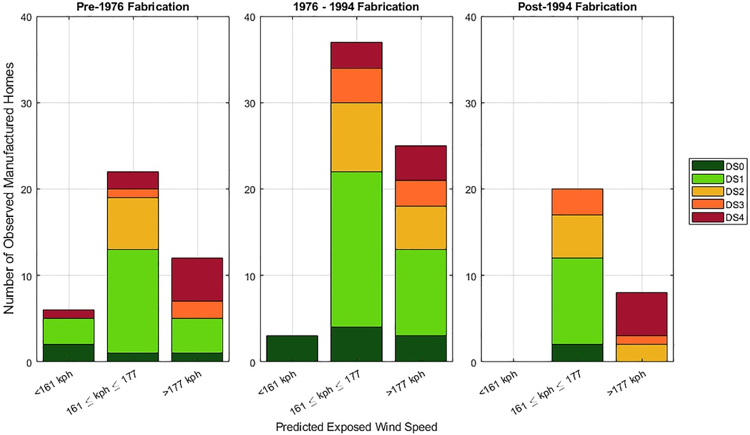
Wind researchers have used DesignSafe to access and merge their own data with the data of others to produce new works that fill substantial gaps in the existing literature. Researchers from the University of Kansas and University of Alabama (Sutley et al. 2020) merged subsets of field reconnaissance data from two separate hurricanes from RAPID: Assessing the Performance of Elevated Wood Buildings, including Manufactured Housing, in Florida during 2018 Hurricane Michael'' (Sutley et al. 2019) and RAPID: A Coordinated Structural Engineering Response to Hurricane Irma (in Florida) (Kijewski-Correa et. al. 2018). Read more >>
Statistical models for shear wave velocity profiles (Bahrampouri et al. 2019)

Field characterization datasets such as the subsurface geotechnical dataset from the DesignSafe project Dynamic Characterization of Wellington, New Zealand" project (Cox and Vantassel 2018, https://doi.org/10.17603/DS24M6J) can be exploited for a variety of purposes. Although the data collected by Cox and Vantassel (2018) was collected to understanding earthquake shaking in Wellington, New Zealand from the 2016 Kaikoura earthquake, Dr. Rodriguez-Marek and his colleagues at Virginia Tech used the data to represent the statistical uncertainty of the shear wave velocity (Vs) at a site for use in ground response analysis. Read more >>
Basin Effects and Limitations of 1D Site Response Analysis from 2D Numerical Models of the Thorndon Basin (McGann et al. 2021)
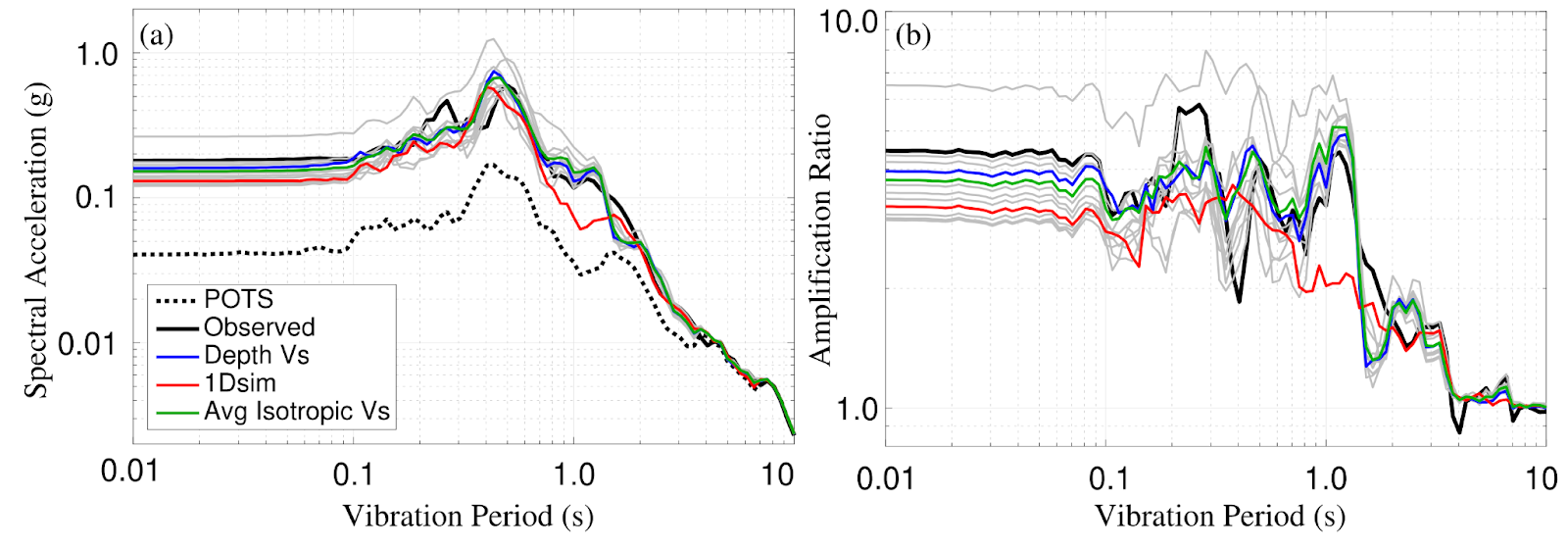
The versatility of well curated public datasets enables their continuing reuse to advance the field of natural hazards engineering. Researchers from University of Canterbury and The University of Auckland used data published on DesignSafe to better understand earthquake hazard at sites located in sedimentary basins. In their paper, McGann et al. (2021) compare 1D and 2D site response for the Thorndon Basin located in Wellington, New Zealand, and find significant amplification of earthquake shaking, as compared to 1D analyses, when 2D basin-related effects are taken into account. The work was made possible, in part, by data acquired by Cox and Vantassel (2018) to characterize the subsurface soils in the city of Wellington, New Zealand following the 2016 Kaikoura earthquake. Read more >>
Quantitative modeling of residential building disaster recovery and effects of pre- and post-event policies
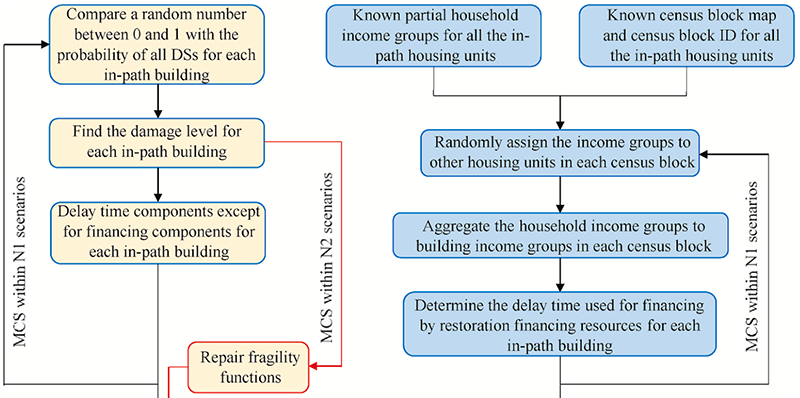
DesignSafes data-publishing capability has enabled a cross-disciplinary study between structural engineers and social scientists to understand how social circumstances, in addition to the building's structural aspects, affect community resilience. A recent study by Wang and van de Lindt (2021) published in the International Journal of Disaster Risk Reduction explores how social factors, such as household income, and structural considerations, such as whether a retrofit had been performed recently, affect the time to recovery following a tornado. Read more >>
An uncertainty-aware framework for reliable disaster damage assessment via crowdsourcing
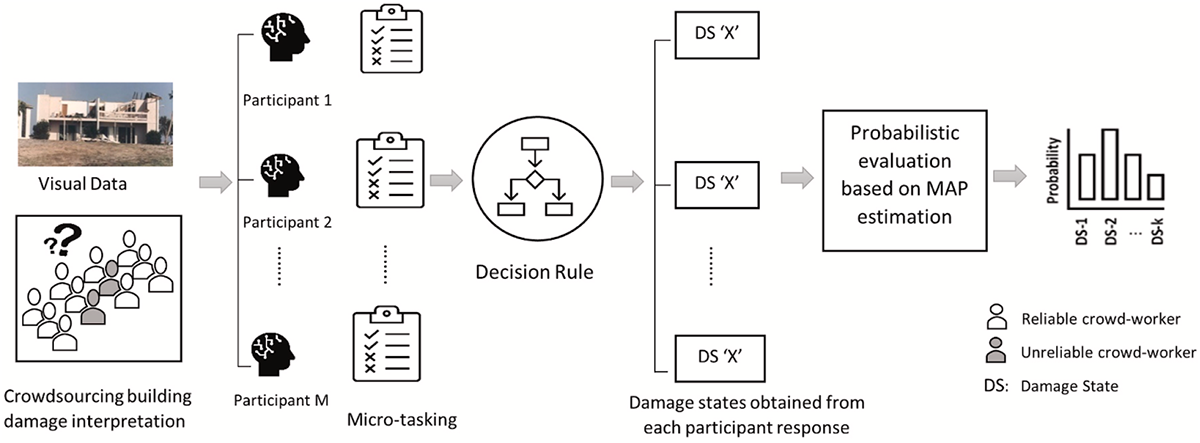
Data of wind- and surge-induced structural damage published on DesignSafe was exactly what researchers at Texas A&M University (Khajwal and Noshadravan, 2021) were looking for to develop a methodology for improving the reliability of crowdsourcing post-disaster damage assessment of buildings. In particular, they were interested in disaggregating expert-reliant judgment-based statements of post-disaster structural health into questions answerable by non-engineering experts and quantifying the uncertainties of their responses. To evaluate their methodology 70 non-experts classified damage to 60 buildings from the field dataset collected by Roueche et al. (2018) after Hurricane Harvey. When comparing the expert and non-expert assessments, they found that their question-based, uncertainty-aware framework produced assessments that more closely resembled those of experts than the commonly used majority-vote approach. Read more >>





